Medieval Warfare picks up where its sister magazine, Ancient Warfare, leaves off. Starting around 500 AD, Medieval Warfare examines the world during the Middle Ages up through the early years of the Renaissance (the magazine generally leaves off in the 16th century). While popular topics such as the Crusades and the Vikings are given regular coverage, Medieval Warfare also tackles more complex and obscure topics, ranging from the Umayyad Caliphate versus the Byzantine Empire to horse trading in 14th-century England.
Medieval Warfare
Editorial
Marginalia
THE VIKINGS OF BIRKA • In my book The Real Valkyrie, I reread medieval texts and re-examine archaeological finds to recreate the world of one warrior in the Viking Age: the warrior buried in grave BJ581 in Birka, Sweden, and determined by DNA testing to be female.
THE HISTORY BEHIND THE LAST DUEL • The Last Duel, now in worldwide release, is based on my book of the same title (Crown, 2004) about the famous 1386 Carrouges-Le Gris duel to the death. I first encountered the story in Froissart’s Chronicles in the early 1990s, and I spent five years researching and writing my book. It was optioned for film three times, each option resulting in a screenplay. But it took fifteen years for a script to be realized on the big screen. And it took no less than a knight – Sir Ridley Scott – to pull it off.
THE SAMURAI • Few warriors around the world are as well-known as the samurai of feudal Japan. These elite soldiers developed over centuries, including their weapons, armour, fighting styles, and system of expected behaviour. The latter, known as Bushido, was a type of martial ethos unique to samurai. Japanese Shintoism and Buddhist religious concepts were fused into this structure in order to reflect an encompassing samurai culture. The samurai became essential to wielding power for the leaders of feudal Japan.
LE JOUVENCEL • “My intention, with God’s help, is to write a little treatise, in the form of a story, to inspire all men, and especially those who pursue the extraordinary adventures of a life of war, to seek always to do good and to enhance their fortitude … For I myself can guarantee … [that] although excellence and honour in the art of war remains a matter of chance, nevertheless a life in war offers more assured and greater promise of advancements than does any other career.”
THE HIDDEN HISTORY IN LE JOUVENCEL • Jean de Bueil died in 1478, probably confident that his work Le Jouvencel would be an enduring and invaluable resource for future knights. A few years later, a commentary appeared that would change our understanding of this text.
Who was really who
A CITADEL AGAINST A CITY • There are two Antwerps in the Civitates Orbis Terrarum, which is a glorious sixteenth-century collection of city maps and the very first of its kind. The two maps tell the story of how a city’s walls and citadel, its defences, can end up ruining it.
THE SPEAR • Many of the churches of England harbour unexpected treasures, and the otherwise rather unprepossessing church in Fordington dedicated to St George, on the outskirts of Dorchester in Dorset, is no exception. Over the outer doorway is a magnificent carved tympanum – probably made around 1100 – depicting two groups of infantry soldiers, one of which is being attacked by a mounted knight.
LET SLIP THE DOGS OF WAR • In September 1270, King James I of Aragon granted custody of Játiva Castle, in central Valencia, to his seneschal. A surviving charter of the time assigned a budget to provide for a garrison of 30 men-at-arms, a pack animal, and “two dogs of war”. Here, therefore, we have clear evidence for the employment of dogs in a military capacity during the medieval period. Yet many questions remain unanswered about the nature, extent, and significance of this practice.
THE ‘SCIENCE’ OF...

 Issue 11 - 2024
Issue 11 - 2024
 Issue 10 - 2024
Issue 10 - 2024
 Issue 9 - 2023
Issue 9 - 2023
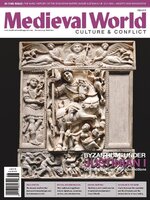 Issue 8 - 2023
Issue 8 - 2023
 Issue 7 - 2023
Issue 7 - 2023
 Issue 6 - 2023
Issue 6 - 2023
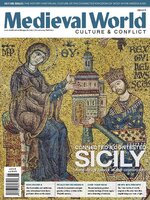 Issue 5 - 2023
Issue 5 - 2023
 Issue 4 - 2022
Issue 4 - 2022
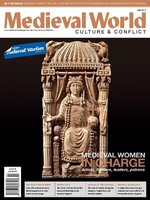 Issue 3 - 2022
Issue 3 - 2022
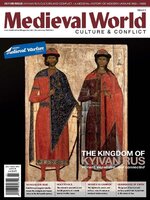 Issue 2 - 2022
Issue 2 - 2022
 Issue 1 - 2022
Issue 1 - 2022
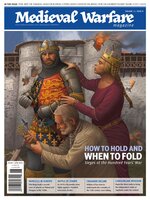 MW X11.1
MW X11.1
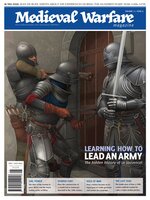 MW X1.5
MW X1.5
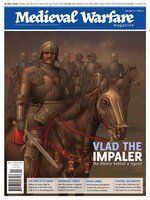 MW X1.4
MW X1.4
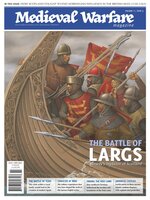 MW X1.3
MW X1.3
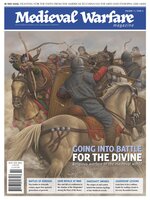 MW X1.2
MW X1.2
 MW X1.1
MW X1.1
